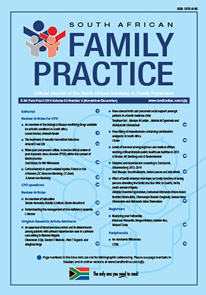The treatment of sexually transmitted infections
Keywords:
Sexually transmitted infections, Chlamydia, Gonorrhoea, Syphilis, Syndromic Management
Abstract
The high level of sexually transmitted infections (STIs) in South Africa can be attributed to a large number of factors including low socio-economic conditions, social stigma, gender inequalities, inability to access adequate health care systems and lack of preventative programmes. The main curable STIs consist of chlamydia, gonorrhoea, syphilis and trichomoniasis, most of which occur in the developing world. The inability to adequately treat the infections leads to morbidity and has wide-ranging consequences on reproductive health and the health of infants. Due to the inefficient treatment of STIs, the World Health Organisation (WHO) recommended and promoted the syndromic management of STIs in developing countries at the point of contact with the health service provider with the intention of improving the quality of care of these patients. The syndromic approach to STI management depends on patient symptoms and the signs presented at the clinical examination. The four main syndrome management protocols are for urethral discharge and swollen testes, genital ulcers, vaginal discharge and lower abdominal pain in women. After identification of a syndrome, combined therapy is utilised to treat the common causes of the infection. A diagnosis can be made quite rapidly without the need for expensive equipment and tests or special skills. Health care providers make use of flow charts or algorithms for diagnosis and treatment. Algorithms or flowcharts should be adapted to local conditions taking into consideration aetiology, local antimicrobial susceptibility patterns and drug availability. These protocols will help with the prevention and treatment STIs in South Africa.
Section
Review Articles
By submitting manuscripts to SAFP, authors of original articles are assigning copyright to the South African Academy of Family Physicians. Copyright of review articles are assigned to the Publisher, Medpharm Publications (Pty) Ltd, unless otherwise specified. Authors may use their own work after publication without written permission, provided they acknowledge the original source. Individuals and academic institutions may freely copy and distribute articles published in SAFP for educational and research purposes without obtaining permission.

